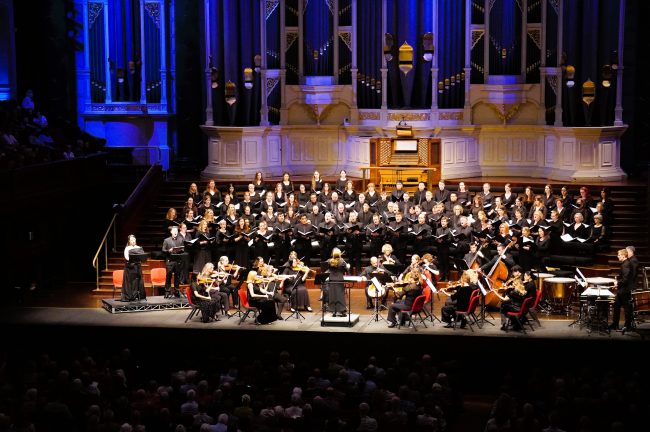March 28, 2024
Review by Paul Neeson (Arts Wednesday)
On Maundy Thursday, the Sydney Philharmonia Choirs under Associate Music Director, Dr. Elizabeth Scott, reminded us why Gabriel Fauré’s Requiem is one of the most revered in that classical music genre.
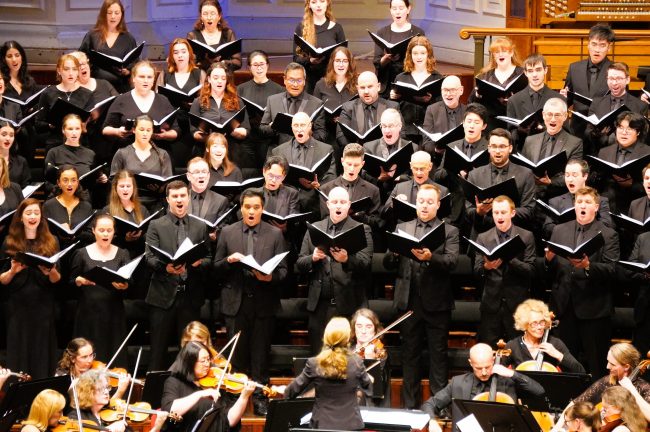
The concert begins with the now familiar Acknowledgement of Country by Deborah Cheetham, Long Time Living Here. Each time this work opens a Sydney Philharmonia concert it reflects the unique time and place we live in, while evoking 60,000 years of history. It always gives me a thrill hearing the rainbow serpent hissing in the opening bars. The work is even more poignant tonight given the themes of conflict and struggle in the next piece.
Shadows and Light by John Peterson is a work in three movements commissioned by Brett Weymark twenty years ago in the aftermath of the 9/11 attacks in New York. The text combines passages from the Requiem Mass with newspaper headlines about the attack and our response to it. This is unusual but not unique as Britten took a similar approach in his War Requiem. The title of this work was inspired by Japanese author, Jun-ichiro Tanazaki, who in the 1930s was describing the intermingling of light and darkness and that they often coincide. The composer states “we should realise that we cannot completely banish the shadows (war and conflict) from our lives – total peace (light) on earth is just not possible.”
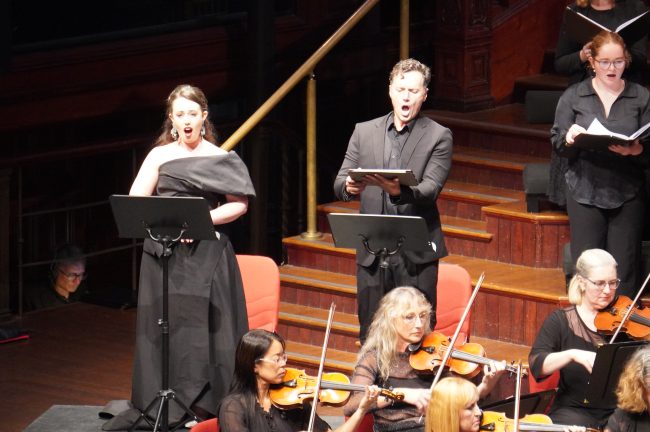
The two outer movements are complex in style with busy energetic strings and percussion being contrasted with a declamatory style of choral writing. This is meant to represent the conflict in our world, yet finding some kind of resolution towards the end. Often I found the balance between the choir and the orchestral writing uncomfortable, and even incoherent.
However it was the middle movement, Where Light in Darkness Lies that was the standout for me. With more subdued choral writing, the balance came true and the emotional journey was more effectively portrayed. This movement also featured soloists soprano Chloe Lankshear and tenor Andrew Goodwin. As a sublime miniature in its own right, I suspect that this movement will feature on ABC Classics compilations or on high rotation on Classic Breakfast (possibly to the horror of the composer and music purists).
Next came Samuel Barber’s Adagio for Strings. Originally composed as a slow movement for his String Quartet, the orchestrated version premiered in 1938. It has been described as “the ultimate expression of human sorrow” and has appeared in film scores, memorials and is played at funerals across the globe. The key to its universal appeal is its simplicity, a short melodic phrase that repeats and slowly ascends in pitch, worming its way into our subconsciousness. And the Philharmonia Orchestra gave a superb rendition tonight.
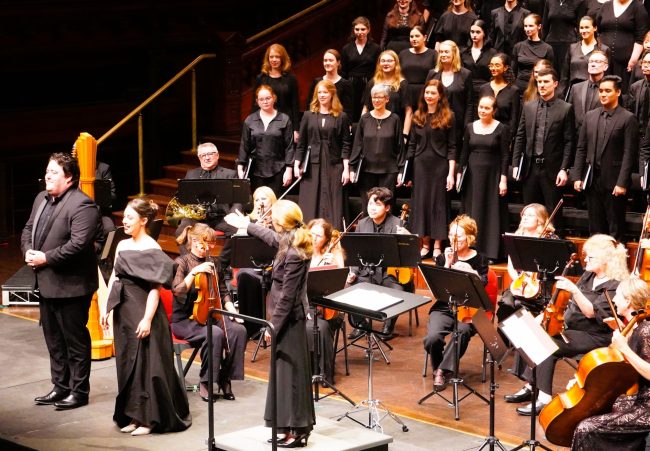
Without an interval, but after a swift and professional stage rearrangement (I have to say this is a fascinating sight we don’t often see as the audience is generally at the bar at this point), we come to the Fauré Requiem. In the 80th anniversary of its Australian premiere, Elizabeth Scott says “Fauré’s original, more intimate, vision for the Requiem (which) has been reconstructed… with its atmosphere of comfort and rest” is what we we will hear tonight. This is a more traditional Requiem in its use of liturgical texts, but what makes this Requiem standout from the more operatic masses of say Verdi or Mozart, is the beautiful choral melodic and harmonic writing. In this version there are only seven movements with a chamber sized orchestra being embellished by two horns and harp.
Darkness and grieving are given full reign in the early movements as you would expect, with baritone Andrew O’Connor shining in the Offertoire and Libera Me. But it is the light and sense of redemption later in the work that brings such joy to the listener. When the harp (Owen Torr) is included in the score we know we are approaching heaven and the angels, and nowhere is that light more present than in the Pie Jesu, with soprano Chloe Lankshear bringing such purity and clarity to the performance.
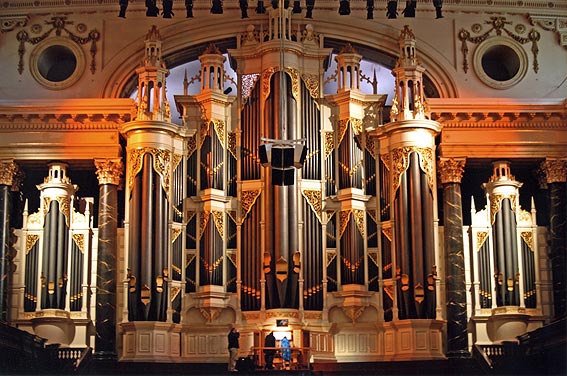
Underpinning all of this is the mighty Town Hall organ performed deftly tonight by David Drury. What an instrument. Fauré was a professional organist and this is apparent in his clever and delicate orchestration. For most of the mass the deep resonance and high countermelodies are subtly present in the mix. And on occasions it rises in volume just enough to create a buzz in both the floor boards and the listener. Synchronicity!
Overall a very rewarding evening of music. The program curation was very sensitive and a well-crafted Easter blend of sacred and secular music. The trajectory of the music and the ideas expressed took us on a beautiful inverse arc from conflict and violence, to despair and grief, and finally to eternal light and redemption.
You can listen to a recent interview with Dr. Elizabeth Scott below:
